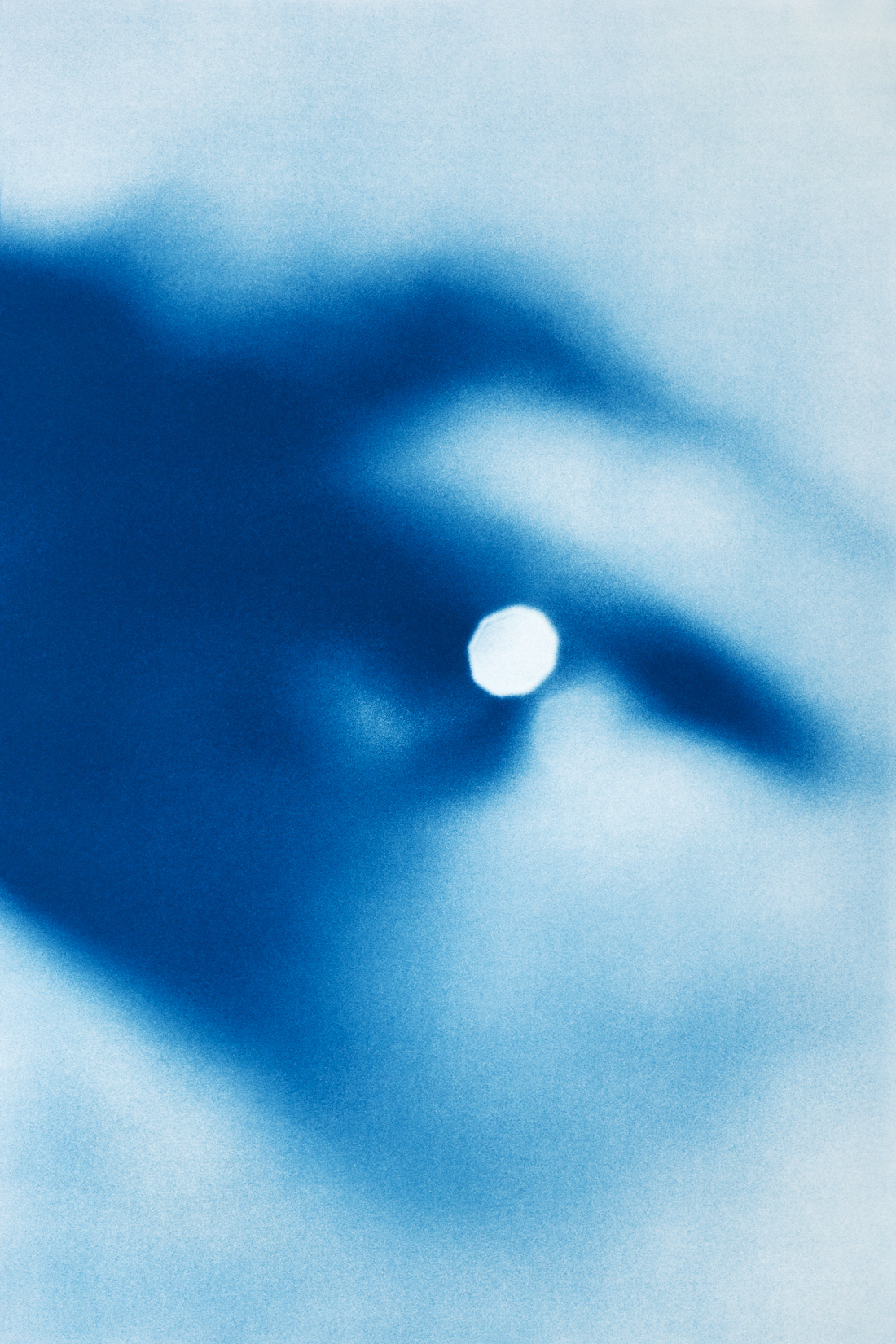Nyima Marin | Book Review
May 30, 2024
In recent years, I felt a deep need to go in search of the world of origins. So I returned to Crete, to the place of my birth, in pursuit of primary images, of common memories. Gradually, behind the petrified blue of cyanotypes, the traces of a timeless and poignant roaming appeared, like the final adieu of the Minotaur to his deserted labyrinth, that of the man I have become to his mineral cradle, to this engulfed island where under the light of the first mornings of the world, in an animal howl, everything began.
Nyima Marin — L’adieu du Minotaure

I carried only one book home from Arles last summer in my suitcase. Now the pages take me on another trip, diving through time with Nyima Marin, to his birthplace on the island of Crete. The Minotaur’s Farewell is a book of cyanotypes, and a book of Marin’s poems, presented together as one work. The poems are a concentrated communion with the land of his birth. They flow with longing, to be reunited with the origin of life.
In the labyrinth of my veins runs
A poor thirsting monster
In search of an animal river
Where long ago sailed the dreams
Of our sleeping heroes
Through these radiant rocks
To legendary metamorphoses
Where the froth of an azure blood rests
Like the milk of an eternal light
In the mouth of my childhood
Words pour their primal imagery into the cyanotypes, like fresh blots of watercolor pigment. An ancient world blooms on the page. The epic tenor of the poems teaches me how to read the photographs. Each subject is colored with mythic significance. It becomes clear to me that every Cretan animal and landscape in the book was chosen for its archetypal meaning.

The book begins with the island, seen from a distance. And then a giant opening appears on a cliffside, like a birth cavern for a god. The shadow of a fully formed man emerges on the rocks. Veins in the stone cut through the man’s shape.

A new page reveals a tree with exposed roots and bare branches growing up from the stones. Then we see a photograph of a man’s forearm. Visible veins reach up the arm, echoing the tree, echoing the stone from before. This is the rhythm in The Minotaur’s Farewell, where landscape and texture mingle with shadow characters, all of them interconnected. Together they build cumulative meaning as the book progresses.

A tree trunk is photographed with no edge in view, so that it is boundless. The surface of the wood feels like a map of an ancient city, with habitation circling in towards lakes, and rivers rippling through a maze of neighborhoods.
Later in the book, a hand appears as another kind of map, tracing origins in the skin. It’s a two-page spread, and the knuckles are much larger than life; the patterns of the skin are the central focus. The man from the shadows seems to be contemplating his unique humanity, and the viewer is asked to do the same.


For all its drama, the work is all made with delicacy. The cyanotypes are carefully printed with a special technique to allow for detail, with more subtle variations in the midtones than is typical for the medium. This is beautifully evident in the rocks and vegetation. The book’s landscapes feel primordial, real but inaccessible. They are great stony lands that only those with wings could easily cross.


Animals populate the book, but they don’t break the feeling that a man here is truly alone with himself. A hawk, her eye dark and inscrutable, is starkly outlined against the sky, turning the singular natural creature into an icon.


I am looking out for beasts as I come across a puzzling blurry image. Has the artist used his hand to make a shadow puppet? Or has he found something in the environment to make this shape? I see the minotaur, bowing his head under the moon. Backing away from the picture, it clarifies into an eye. Incredibly, both man and bull are present in one image, locked in a private communication.
Marin’s book has a primal awareness of the self, a heightened creaturely knowledge, joined with other beasts and living things. I keep coming back to that early darkness on the rock, the outsized vision of a man in shadow. He sees everything for the first time, the past of human civilization still breathing, somehow, in the veins of the stones.
- Lisa Woodward
The book, and more of Nima Marin’s work is available here https://www.nyimarin.com/books